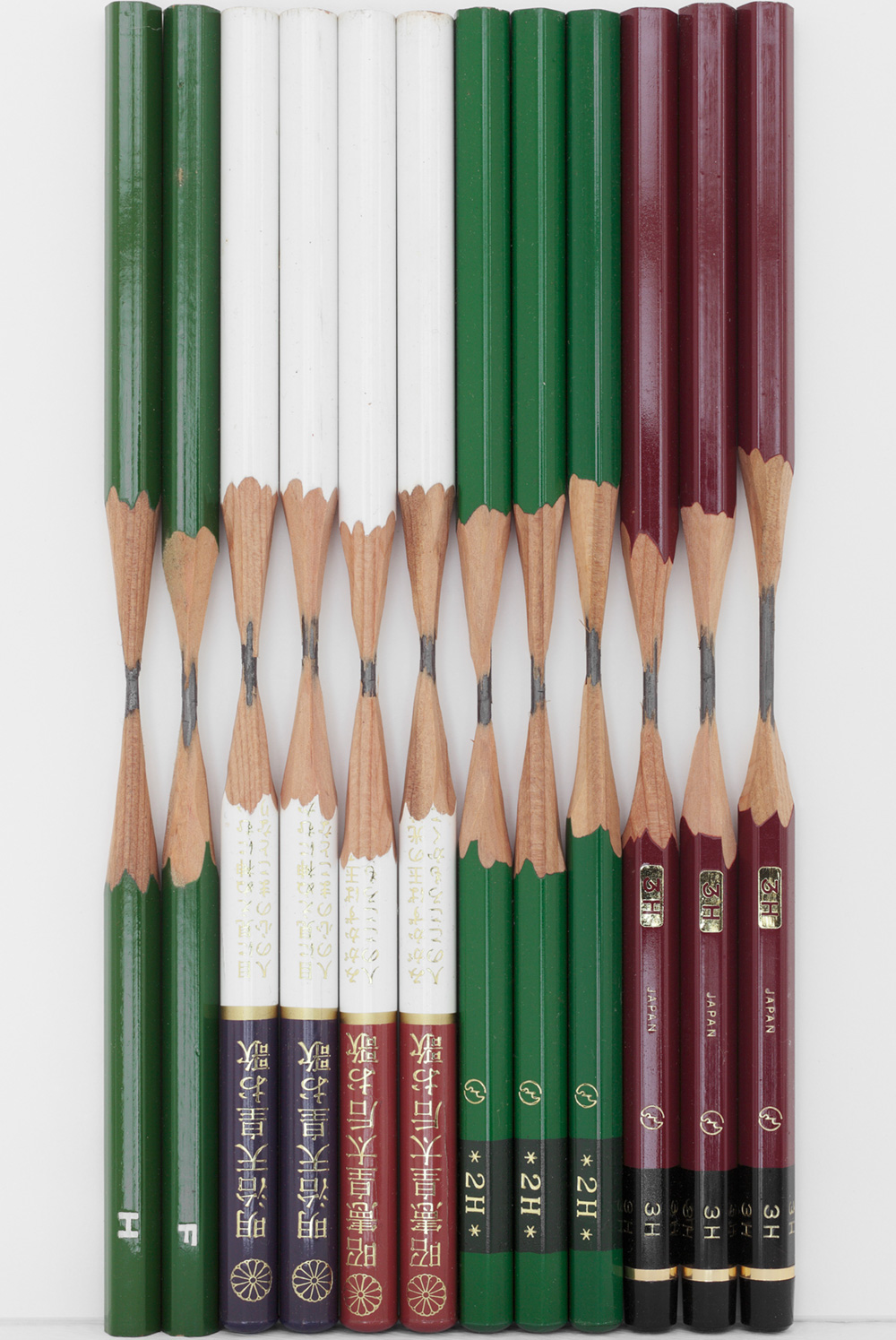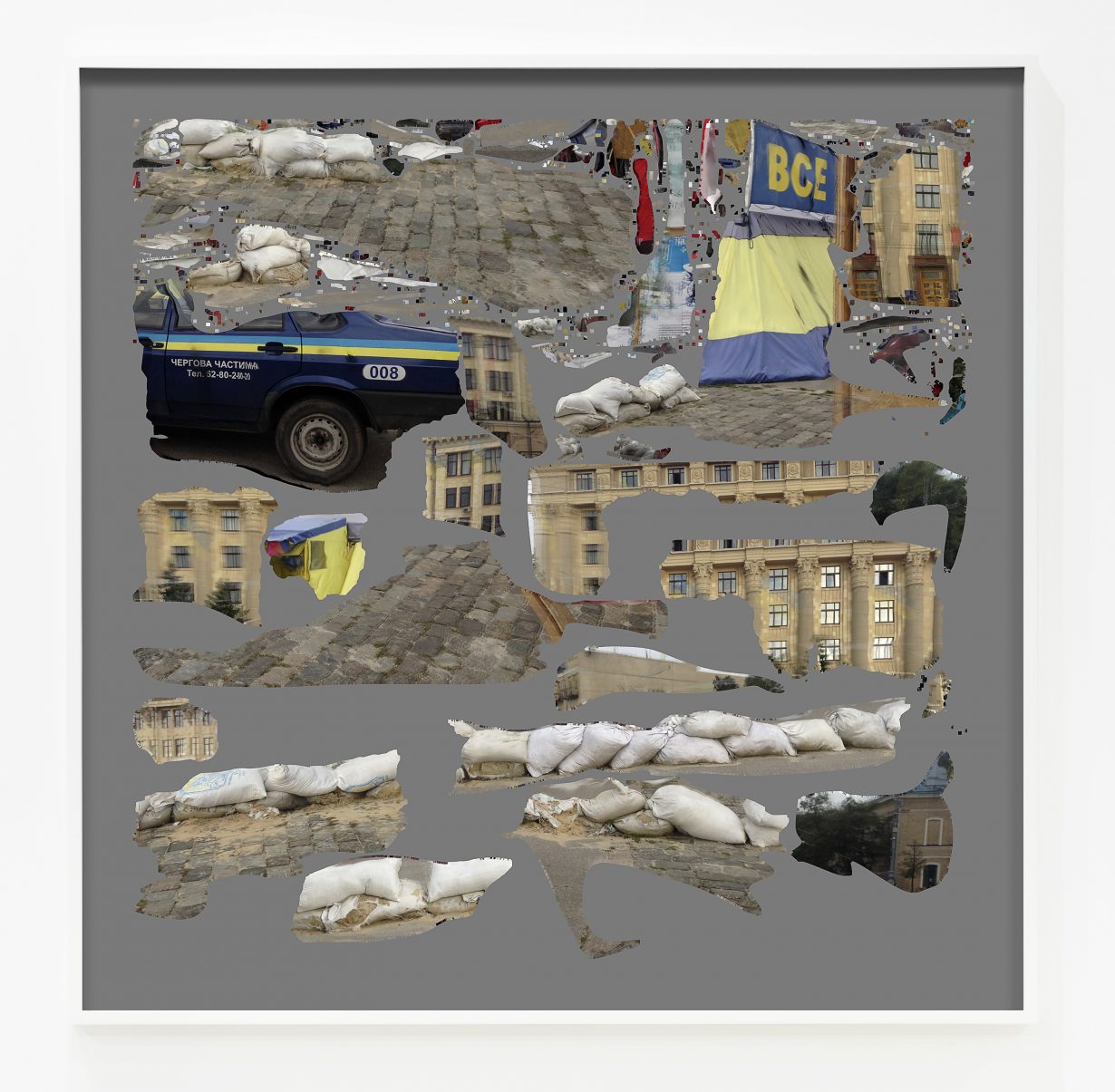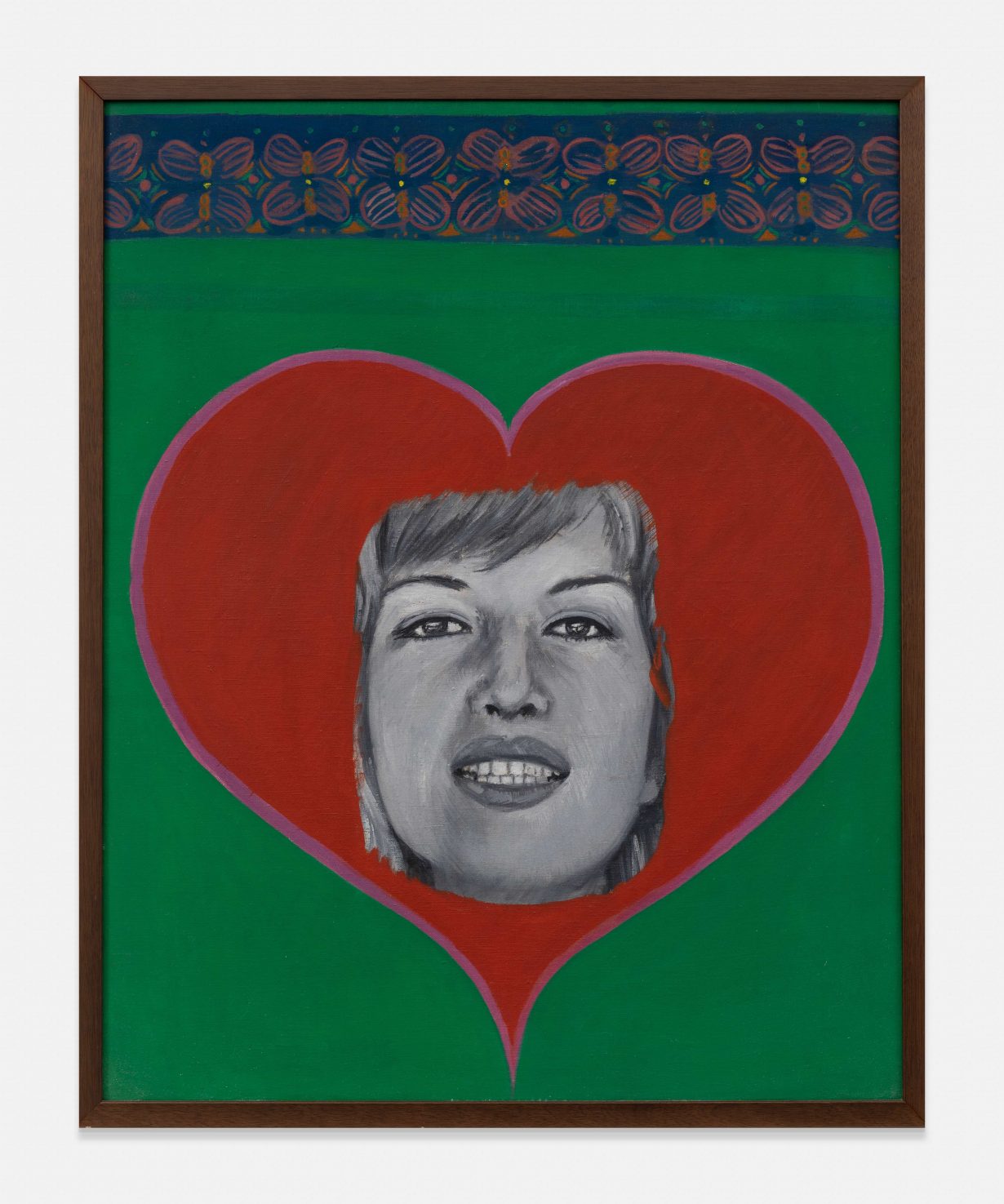From late Georgian painter Karlo Kacharava to the Thailand Biennial and NGV Triennial, our editors on shows they’re looking forward to which open this month

Anne Duk Hee Jordan: I will always weather with you
The Bass , Miami, 4 December 2023–23 June 2024
Jordan is known for her near-psychedelic world-building exhibitions that invite audiences to explore connections between technology, popular culture, colonial histories, art and nature, via installations, sound and video works, sculpture, robotics and kinetic objects. One of her recent projects includes Brakfesten / Le Grande Bouffe (2022–23), a sculpture of dead and felled trees installed in the Swedish nature reserve Södra Hällarn. ‘Sculpture’ feels like a reductive term for what Brakfesten truly turned out to be, though, because what Jordan actually created (or recreated) was the area’s ecosystem of plants and creatures – all of which are adversely affected by Dutch Elm Disease, a blight that threatens the area’s forests. The artist transformed some of the dead tree trunks into ‘tables’ containing local plants, creating a ‘banquet’ for the reserve’s fauna, and turned other logs into water basins; elsewhere pieces of deadwood were used to build insect hotels, birdhouses and miniature huts for rabbits. At The Bass, Jordan continues her environmental inquiry with I will always weather with you, a multisensory exhibition made up of three zones that reflect land, water and air, and which uses ‘technology to examine the perseverance of life on Earth against the increasing challenges of climate change’. If the romantic title is anything to go by, visitors can expect to be immersed in works that reflect the entwined existences of the human and nonhuman, and how we might coexist in an era of environmental instability. Fi Churchman

Yasuko Toyoshima: Origination Method
MOT Museum of Contemporary Art Tokyo, 9 December 2023–10 March 2024
For over three decades, Yasuko Toyoshima has been scrutinising how mundane, daily objects structure our thoughts. One of the first things she’s used is an abacus (Endless Abacus, 1990) that is long enough to wrap around all surfaces of the former Takanawa Museum’s galleries and corridors like a snake – which brings into focus the material limits to the scale of numerical calculation. Other works use stock investment receipts to discuss the financial system (Mini Investment, 1996–), distorted pedagogical tools to question the frameworks of education (Ruler, 1996–99) and reconstructed buttonholes to examine the fabrics of everyday wear (Buttonholes, 2000–). These interests in how objects scaffold thoughts have more recently turned into extensive experiments with wooden panels, built like canvas stretchers, attached to the wall at an angle, taped all over or made into diptychs (Panel series, 2012–). In Origination Method – Toyoshima’s first museum solo – over 400 works will provide a comprehensive overview of what it means to be arbitrarily entangled in a fundamentally material world. Yuwen Jiang

Leonilson
Pinacoteca do Ceará, Fortaleza, 9 December–May
The last year has seen numerous events marking the death of Leonilson three decades ago, with this retrospective in the Brazilian artist’s city of birth the culmination. The pictorial or diagrammatic simplicity of the artist’s paintings, drawings, sculpture and embroidery belied their quiet politics. A member of the Geração 80 (80s Generation), and influenced by a brief trip to Germany and his introduction to neo-expressionism, Leonilson’s scenes provided a wry commentary on the end of Brazil’s dictatorship and the apparent newfound freedoms for art. Incêndio a bordo (1987) is typically enigmatic, while invoking themes of alienation, anxiety and power. It shows a naked male figure rendered in acrylic, hurtling headfirst, flames licking the body, into a mountain range. While often foregrounding queer references, as well as figures representing Black Brazilians and Brazilians from the northeast, a region often neglected by the country’s art elite, after his diagnosis as HIV positive in 1991, Leonilson’s work became both more personal and existential. Embroidery came to dominate, often providing diaristic meditations on life and death. Oliver Basciano

Thailand Biennale
Various venues, Chiang Rai, 9 December 2023–30 April 2024
The third edition of Thailand Biennale arrives in Chiang Rai this December. Guided by artist Rirkrit Tiravanija and curator Gridthiya Gaweewong, the exhibition is themed as The Open World, a title inspired by the enshrined Buddha at Chiang Rai’s Wat Pa Sak, whose power ‘opens’ three worlds: the god world, the underworld and the human world. With the aim of ‘opening up’ new connections and conversations, The Open World has invited both local and international artists to engage with the region through questions posed to them by the curatorial team, such as: ‘How do we deal with the complex history of the city?’, ‘How can we share resources?’ and ‘Can we imagine the possibility of a better future?’ The works of Chiang Rai-based interdisciplinary artists Busui Ajaw, Chata Maiwong, Sriwan Janehuttakarnkit and Sompong Sarasap will be engaging with national figures like film director Apichatpong Weerasethakul and design studio All(Zone), as well as international artists Nguyen Trinh Thi, Ernesto Neto and Kader Attia. The cumulation of this range of practices promises a fascinating inquiry into the way local specificity might be interrogated by differing global perspectives. Marv Recinto

NGV Triennial 2023
NGV International, Melbourne, 3 December 2023–7 April 2024
Inaugurated with its 2017 edition, the NGV Triennial’s second edition found itself opening in shadow of the COVID pandemic, with few of the non-Australian artists able to get to the show. The triennial is an ambitious interdisciplinary gathering of work by over 100 artists, designers and architects, offering a survey of both national and international art goings-on to an audience that, given Australia’s distance from most other places, might not otherwise have the chance to see. Which means that NGV Triennial is framed as a response to ‘the most relevant and critical global issues of our time’. (Which, to be fair, a lot of triennials are – relevance and global issues being what international contemporary art is supposed to be all about.) In 2020 those issues included ‘climate change, representation and race, isolation and speculation on the future’. For NGV Triennial 2023 the big themes are ‘Magic, Matter and Memory’,so expect work that deals with belief systems, natural resources and human histories and identity. There’s a solid contingent of familiar international art names (Yoko Ono, Tracey Emin and Hito Steyerl, for starters), and a broad sweep of contemporary activity, including a newly commissioned installation by Iranian Hoda Afshar, taking on colonialism and female representation; a room by Japanese Azuma Makoto, of floral and botanical specimens captured for eternity in acrylic blocks; and Hawaiian Lehuauakea’s mixed-media installation that puts indigenous ecological knowledge into dialogue with ‘Western’ science. J.J. Charlesworth

Alia Farid: Elsewhere
Chisenhale Gallery, London, 1 December 2023–4 February 2024
Elsewhere is a new commission by the Kuwaiti-Puerto Rican artist who works in film and sculpture. Much of Farid’s work until now has involved everyday objects that carry specific meaning in time and place. Her installation for the current Artes Mundi prize exhibition at the National Museum in Cardiff (on view through 25 February 2024) are huge sculptures shaped like plastic water bottles and jerry cans (and made of resin) with small sinks built into the side of them. They reference life in desert climates, where water is a precious resource and these large-scale vessels could be used as public drinking fountains. At the Chisenhale, this new work is meant to give visibility to less-often told histories (often marginalised by Western hegemony and narrative). The work draws on long-term research Farid has been conducting about Arab and South Asian immigration to Latin America and the Caribbean region. This mapping of migration would play out in this exhibition in a new series of large-scale textile works handmade by weavers in Iraq that introduce a located aesthetic to the Elsewhere Farid is looking at. Orit Gat

THE NO NAME SHOW 3.0
Gravity Art Space, Quezon City, 15 December – 13 January
While the question of whether authorship can be separated from artwork continues to baffle professional and amateur philosophers alike, Gravity Art Space – a contemporary gallery run by two former mathematicians with a focus on events and community building – is stirring the pot with THE NO NAME SHOW 3.0. Without those pesky little artist names, and the accompanying weight of artistic ownership, you can freely wonder about an artwork’s subject or technique, or even whether that blobby painting is actually good. Now in its third iteration, the free-for-all exhibition features a range of media, including painting, drawing and sculpture. What began in 2021 as an observational experiment on the collecting habits of the gallery’s patrons has proved to be a compelling premise that builds upon wider questions of, yes, authorship but also authority, taste and contemporary connoisseurship. Marv Recinto

Karlo Kacharava: Sentimental Traveler | europalia georgia
SMAK, Ghent, 2 December 2023–14 April 2024
The paintings of Karlo Kacharava are as gothic and cinematic as his short life. His scenes of Georgian life are populated by melancholic looking individuals – all thin faces, darkened eyes and averted gazes. In Sentimental Traveler, the 1993 acrylic on canvas which lends this retrospective its title, various figures, each seemingly in their own world, populate a washed-out spartan landscape. A couple – he tight lipped and moustached, her with a severe bob – take up the foreground. Two women are further back down the path that stretches over to the horizon. One holds a book. Is that a rocket launcher on the other’s back? Leaving his home in Tbilisi, where he was the driving force behind various artist groups, as well as producing poetry and criticism, Kacharava left for Russia the same year he made this work. Soon after, however, in Moscow, he was the victim of a robbery, suffering a blow to the head. Within a year, midway through a series of tempera works titled Art of Darkness, painted over 11 days by candlelight, the artist suffered a brain aneurysm and died. Oliver Basciano

Pauline Boty: A Portrait
Gazelli Art House, London, 1 December 2023–24 February 2024
Pop artist Pauline Boty’s story has become a legend in the history of British postwar art, her brief career rediscovered in the new millennium after decades forgotten, following her untimely death in 1966, at the age of twenty-right. Student at the Royal College of art in the late 1950s, friends with Peter Blake and David Hockney, Boty was a brief, bright embodiment of the promise and the contradictions of ‘swinging London’. She insisted on her status as an artist in a male-dominated artworld, refusing to be pigeon-holed by her gender. Navigating the emerging 1960s counterculture with shrewd self-consciousness and optimism, in the brief five years from 1961 Boty produced a body of painting that brought a young woman’s perspective on an otherwise blokeish Pop art; rather than the distanced takes on mass culture of Blake, Allen Jones and others, Boty’s paintings revel in the pleasures of consumerism, in the experience of fandom and infatuation, but with a gaze invested with tenderness towards the reciprocal desires of men and women – in sharp contrast to the ironic fetishisation of women found in other Pop art. This rare show brings together key canvases such as Colour Her Gone (Boty’s homage to Marylin Monroe) and With Love to Jean-Paul Belmondo (both 1962) with earlier collages and works in stained-glass from her time at the Royal College. Diagnosed with cancer while pregnant in 1965, Boty refused chemotherapy that would have killed her baby, and she died a few months after her daughter was born. It’s the kind of a tragedy that produces art history’s ‘what ifs’, while valuing what an artist made all the more. J.J. Charlesworth

From the Other Side
The Australian Centre for Contemporary Art, Melbourne, 9 December 2023–3 March 2024
When I’m alone, I’m often paranoid that something sinister might happen to me: that I’ll be attacked by birds, possessed by a demonic spirit or just plain murdered. For a while when I was a child, I also used to have intense fears of the red eyes of ‘Bloody Mary’ peering at me from mirrors. These feelings are most potent after watching one-too-many horror films in a row, but the genre has certainly had a historic fixation with either victimising or villainising women. From the other side, a new exhibition at the Australian Centre for Contemporary Art focuses on the theme of horror and how it can articulate societal anxieties (Contagion [2011], anyone?) through the multimedia works of 19 Australian and international artists like Louise Bourgeois, Tracey Moffatt and Jemima Lucas. The exhibition takes on a feminist lens, dissecting the traditional victim or villain archetype women have in horror and building upon the reclamation of the ‘monstrous-feminine’ in recent years. Blending feminism, queerness, humour, camp, dread, rage and catharsis, From the other side identifies the horror genre within the quotidian and provides a vulnerable space to express shared fears and frustrations experienced by queer, feminist and non-binary realities. Marv Recinto
